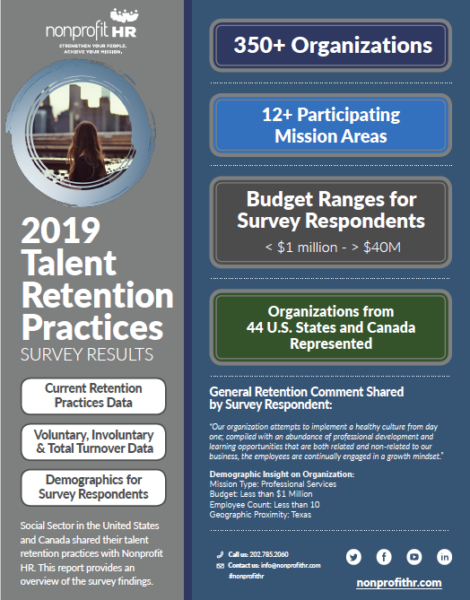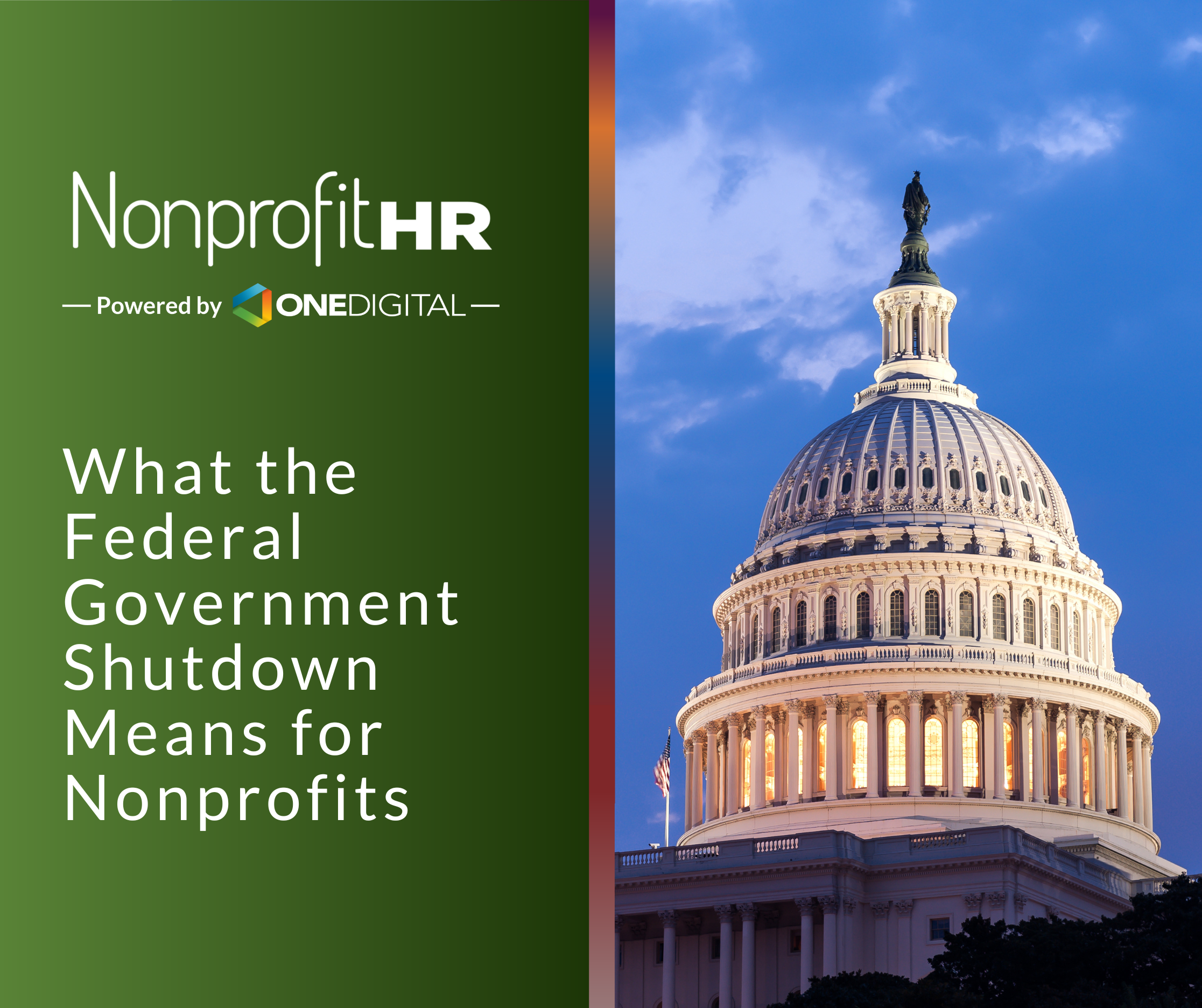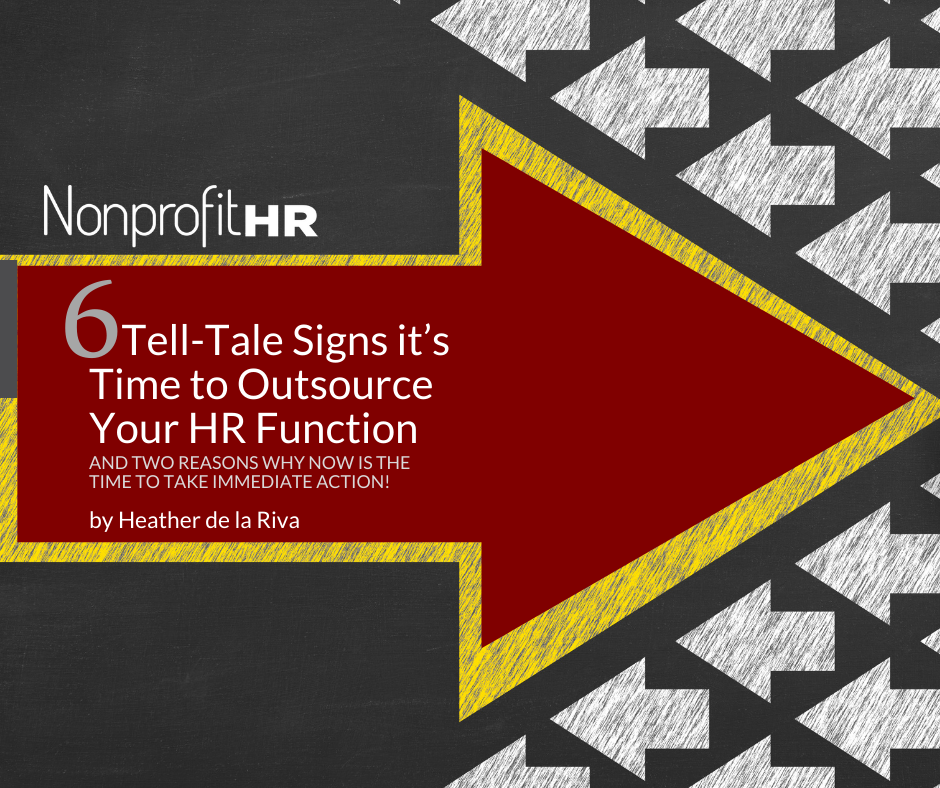WTOP: 5 ways nonprofits can…
Continue to below story:
Millennials bring a new outlook and innovation to your nonprofit organization, but some also have different priorities than the Gen X and Baby Boomer employees who came before them.
Combatting high Millennial turnover rates has long been a hot topic for both for-profits and nonprofits, but few organizations have truly cracked the code for retaining these employees. According to our 2016 Nonprofit Employment Practices Survey, one in three nonprofits report retaining staff under the age of 30 as their biggest staffing challenge. Clearly, Millennial turnover is a very serious issue for the social sector, especially considering turnover costs can be as high as the equivalent of 75 percent of an employee’s annual salary.
If you feel like you’ve unsuccessfully tried every possible solution for retaining your Millennial talent, you’re not alone. But don’t give up hope. Here are some new millennial retention tactics many nonprofits aren’t currently pursuing that your organization should experiment with:
1. Find out what kind of culture your Millennial talent actually wants
Despite what media and pop culture might lead you to believe, not all Millennials want to work somewhere with a ping pong table or weekly happy hours. Don’t assume you know what this generation is looking for at work. Have open-ended conversations with your existing Millennial employees and ideal candidates to find out what they’re really looking for.
How do you do it?
No matter the specific challenges you face, your organization should conduct a cultural needs assessment––a survey and analysis of the elements of your workplace’s culture that are helping and hindering individual and organizational effectiveness. In this assessment, your goal should be to understand the differences in perspectives based on different demographics in your organization.
Think about people who have been with your organization for a long time compared to new hires, men compared to women and younger staff compared to older staff. If you’re specifically concerned about Millennial retention, focus your survey on your Millennial talent. Look for recurring themes in the feedback you receive from Millennials to discover what you should prioritize when taking steps to improve your organization’s culture that will keep them around.
Nonprofit HR has conducted cultural needs assessments for organizations like the American Foundation for Suicide Prevention, US Lacrosse and Access Living, and following those assessments, we’ve helped organizations make strategic changes like streamlining communication between leadership and employees, improving onboarding programs and overhauling performance management processes.
2. Provide a vehicle for Millennial talent to give meaningful feedback
For Millennials, management should be reciprocal. According to a survey from TriNet, 32 percent of Millennials in the workplace don’t like when they’re unable to provide feedback to their employer or provide a response to the feedback they receive.
When your organization encourages an open dialogue about workplace dynamics, listens to what is being said, and demonstrates a commitment to being responsive, you create a culture of trust and growth that nurtures your team all the way from entry-level to leadership.
How do you do it?
Don’t just give feedback, ask for it in return as well. Put a system in place that both encourages employees to discuss concerns with management and makes it easy for them to do so. Options could include a Google form for employee feedback, a regular survey or even a simple, well-communicated open door policy.
GE has developed its own app that allows employees to provide feedback to any other team member in any division at any time. Your nonprofit may not have room for a custom app in your budget, but you can use a system like Fizz, 15Five, ClearCompany or Halogen Performance to allow employees to both provide and receive immediate feedback.
3. Evolve your approach to performance management–but don’t overthink it
No one enjoys annual performance reviews, and Millennials are the most vocally opposed to them. In fact, 69 percent of that demographic think the traditional performance review process is flawed – not to mention a decent component of us older professionals too.
Millennials appreciate frequent constructive feedback, and if you change your process to incorporate ongoing reviews and a channel for safely sharing upward feedback, your organization will be more likely to quickly address problems before they result in voluntary or involuntary turnover.
And as most nonprofits already understand, Millennials are hungry for growth opportunities in their roles and seek organizations that foster their career development. You can use performance meetings as an opportunity to not only provide feedback, but also clearly outline necessary steps your Millennial talent can take toward their professional career development goals.
How do you do it?
The first step is to take a hard look at your current performance management process and identify areas where it can be improved. Streamline and simplify processes wherever possible. Shift from paper to online systems in an effort to improve efficiency. And, as with any change that affects your team, communication is key. Ask your team members for feedback about your performance management process and alter it accordingly.
Don’t wait until the same time every year to give feedback. Instead, opt for a monthly or quarterly schedule or encourage informal voluntary check-ins between employees and management. Consider implementing a tech tool to allow team members to receive immediate feedback, as this solves challenges that come with scheduling and documenting more frequent feedback meetings. Additionally, put a system in place to reward work well done instead of purely focusing on constructive criticism, keeping in mind that rewards can be monetary and non-monetary (think paid time off, stretch assignments).
Two examples of major for-profit companies making performance management changes nonprofits can also easily implement are Adobe and Google. Adobe cut voluntary employee turnover by 30 percent after simply introducing a frequent check-in program as a replacement for annual reviews. At Google, a company that often comes to mind for succeeding with millennial retention and innovation, goal-setting has taken center stage. Managers at Google incorporate actionable career development goals into performance reviews and discuss with team members how they’re taking steps to achieve those goals.
4. Put reverse mentorship programs in place at all levels
Millennials bring new skills and expertise to the table that your Baby Boomer and Gen X talent might not already possess. Even if there isn’t a direct need for these skills within a Millennial’s job role, you can embrace and nurture them through cross-generational team partnerships and mentoring.
How do you do it?
Reverse mentorships are often sophisticated, comprehensive programs, so this is a tactic most accessible to larger, established organizations.
In these programs, employees from different generations are matched and meet at regular intervals, usually weekly or monthly, to teach one another a unique skill. In one of these engagements, for example, a Millennial could train a Baby Boomer in social media or coding, while the Baby Boomer could in return provide negotiation training or presentation coaching.
As the labor market continues to tighten, competition for talent continues to become more fierce, and the nonprofit sector continues to tackle Millennial turnover. Millennials have surpassed Gen X as the largest generation in the U.S. workforce. Now, members of a new generation with new needs and expectations are graduating and embarking on their career journeys. The first members of Generation Z, which includes those born between 1996 and 2010 will be graduating from college and beginning to look for jobs within the next year. That means your organization will need to be prepared to manage the expectations and preferences of up to five generations at once. If you’re struggling with this immense challenge, learn how we can help.






























